Sorghum Sudanense, commonly known as Sudan grass or Sorghum sudanense, is an annual flowering plant from the Poaceae family. Due to its high nutritional value, the plant is widely used as a forage crop.
The origins of sorghum trace back to Central Africa and China, where it grows wild. In this article, we will explore what Sudan grass is and how to cultivate it effectively.
Table of contents
What Is Sudan Grass?
Sorghum Sudanense was first introduced to Europe in the early 20th century, but large-scale cultivation began only 50 years later.
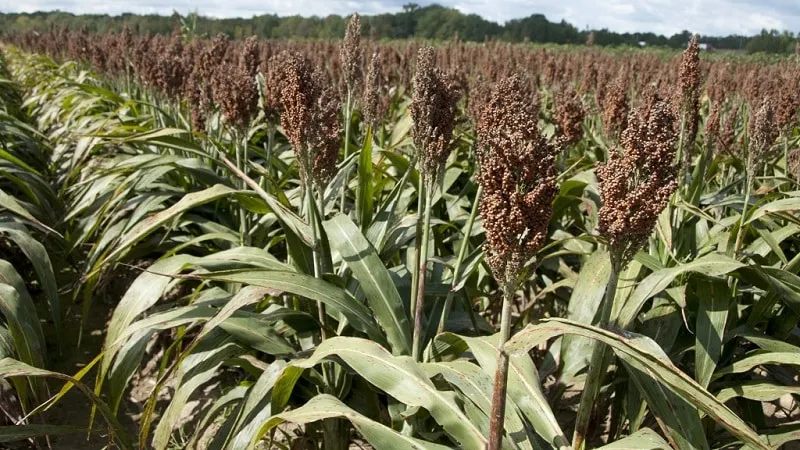
Crop Characteristics
Sudan grass is an annual crop belonging to the Sorghum genus and Poaceae family. It is highly palatable to cattle, sheep, and horses due to its natural sugar content. In terms of feed value, it surpasses most other cereals.
The green mass of this grass is rich in proteins, sugars, and minerals. Sorghum is commonly used for silage production. Nutritionally, Sudan grass silage is nearly comparable to corn silage harvested at the milk-wax stage.
Biological Features
Sorghum Sudanense is a drought-resistant crop with a well-developed root system. It thrives best in chernozem soils but can also be cultivated on slightly saline grounds. However, it does not grow well in waterlogged or acidic podzolic soils.
Important to know. Sudan grass is highly demanding of soil nutrients, particularly nitrogen.
A key biological advantage of this grass is its rapid regrowth after mowing or grazing. The crop can yield 2-3 cuts per summer, and up to 4-5 with regular irrigation. Average productivity ranges from 600–1000 quintals per hectare.
The main drawback of Sudan grass is its slow initial growth, which often allows weeds to overtake the young plants.
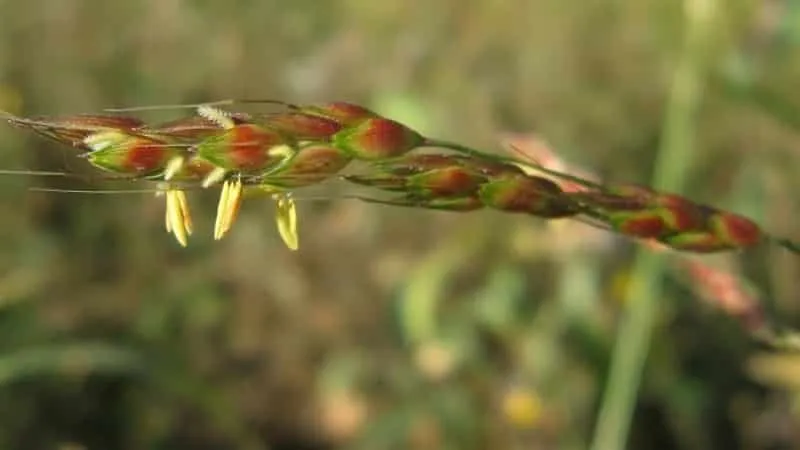
Properties
The plant's robust fibrous root system penetrates the soil up to 3 meters deep. This helps aerate the soil and promotes the activity of soil microorganisms and earthworms, improving soil fertility.
The stems are erect, reaching 1.5 to 3 meters in height, often branching. The inflorescence is a spreading panicle, and pollination is cross-pollinated. The fruit is a caryopsis covered with glumes.
Sudan grass is a heat- and light-loving short-day plant. Seeds germinate at temperatures of +9…+10°C, and the crop tolerates high temperatures well.
Young seedlings are frost-sensitive and die at temperatures below -2…-3°C. In southern regions, the growing season lasts 100–110 days. When grown for green fodder or hay, the first cut is taken 55–65 days after emergence, the second 35–45 days later, and the third after another 30–35 days.
Popular Varieties
Selective breeding of Sudan grass in Europe began in the early 1950s. Several hybrid varieties were developed based on African specimens.
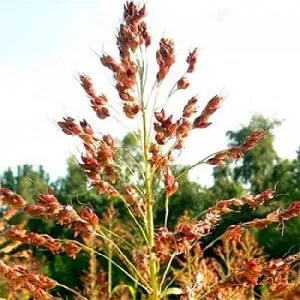 Most popular varieties:
Most popular varieties:
- Brodia 2. Forms up to 7 leaves, reaching 60 cm in height and 4 cm in width. The panicle is elongated and upright. The plant is spreading and resistant to diseases.
- Jubilee 20. A moderately bushy hybrid with a spreading panicle. Seeds are translucent. Early-maturing, with the first cut possible at 35 days post-emergence. Relatively disease-resistant.
- Chishmian Early (pictured). Thin stems up to 1 m tall. Early-maturing, with the first cut at 40 days. Moderate disease resistance.
All three varieties are high-yielding and nutritious.
Applications
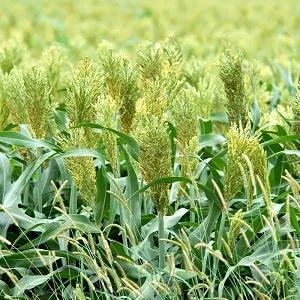 In India and China, sorghum has long been used as food. The grain is cooked into porridge, and flour is baked into flatbreads.
In India and China, sorghum has long been used as food. The grain is cooked into porridge, and flour is baked into flatbreads.
In Europe, sorghum is primarily used in agriculture. Its high sugar content enhances milk yield and livestock weight gain.
A three-component mix with Sudan grass contains 0.28 feed units, 34 units of crude protein, and 20.7 units of digestible protein. For comparison, a four-component mix provides 0.3 feed units, 42 crude protein, and 35 digestible protein—the increase comes from barley.
Sorghum is particularly valuable in southern and southeastern Europe. It ranks first among forage crops in terms of green mass yield.
Important! Sudan grass is indispensable during hot, dry summers. While other cereals see reduced yields, Sudan grass maintains high productivity.
On farms with large cattle herds, sorghum is harvested for hay and silage. After the second cut, regrowth is used for grazing when natural pastures are depleted.
Cultivation
Interest in Sudan grass among farmers continues to grow, and cultivation areas are expanding. Successful cultivation requires attention to specific practices from planting to harvest and storage.
Planting
Sowing begins when warm weather stabilizes and soil temperatures reach +10…+12°C. Seeds are disinfected in a potassium permanganate solution before planting.
Seed rate averages 15–30 kg per hectare. Seeds are sown 3–6 cm deep, depending on soil density. Loose soils are rolled post-sowing to ensure uniform germination.
Note. Sudan grass does not thrive in compacted or waterlogged soils but performs well on saline or alkaline lands.
Ideal predecessors include legumes, legume-cereal mixes, perennial and annual grasses, winter cereals, corn, and sugar beets.
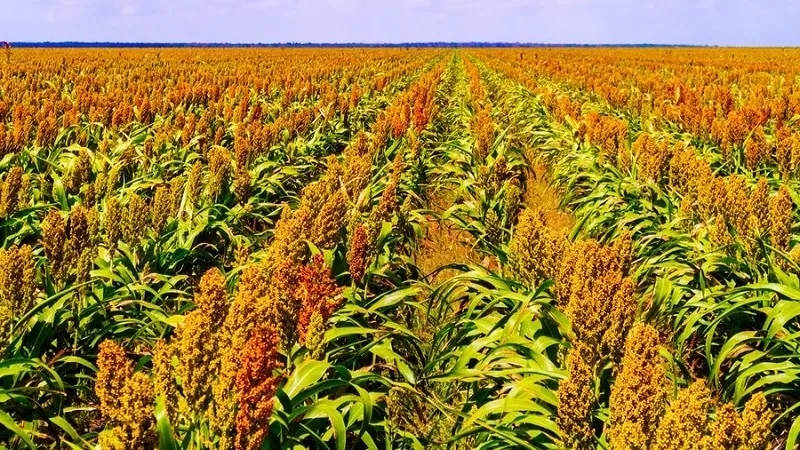
Care
Under favorable conditions, the grass germinates uniformly. Within two months, plants develop 4–6 leaves.
Young seedlings have underdeveloped root systems, making them vulnerable to weed competition. Herbicides such as mineral and organic fertilizers suited to Sudan grass are used for weed control. Proper early care accelerates growth and root establishment.
The crop responds well to mineral fertilizers, especially nitrogen, boosting green mass yield by 24–38% and improving feed quality, including protein content.
Pest and Disease Management
Sorghum has natural defenses against some pests and diseases, including a waxy leaf coating, tannins in grains, and silica and glucosides in leaves.
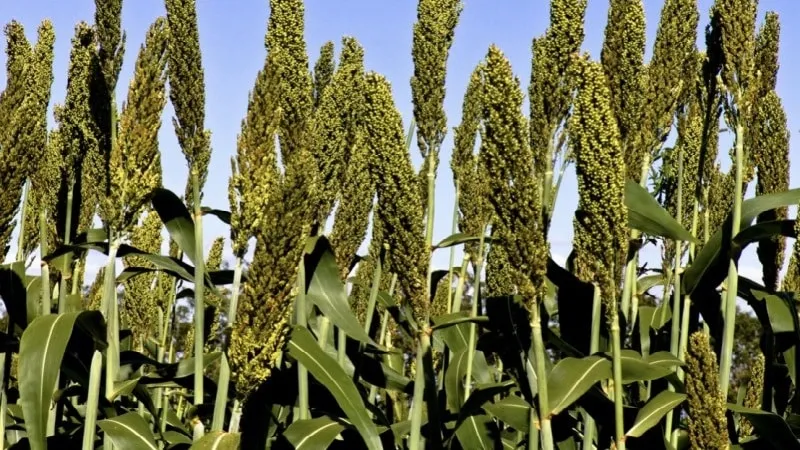
However, pests like aphids, meadow moths, cotton bollworms, and wireworms can cause significant damage.
Aphids
Most harmful to young plants at the 5-6 leaf stage. They damage foliage, stunting growth or killing seedlings, and spread diseases.
Preventive measures include two treatments with "Opercot Acro" or "Zenit," which provide season-long protection. Spraying with "Sherpa," "Rogor-S," or "BI-58" also works well.
Meadow Moth
Caterpillars feed on leaves, slowing green mass growth.
Control: Spray with "Rogor-S" or "BI-58."
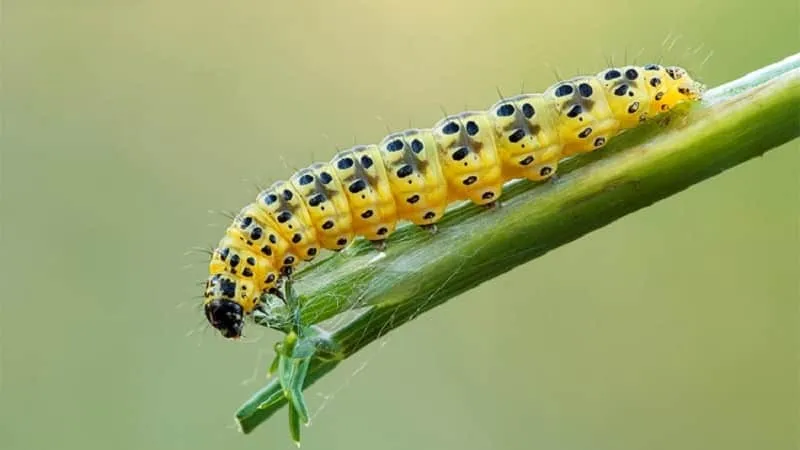
European Corn Borer
Caterpillars consume young leaves and bore into stems, draining sap and killing plants.
Prevention: Remove crop residues, practice deep plowing, and rotate crops. Chemical control is challenging, but "BI-58" or "Zenit" sprays help during larval outbreaks.
Grain Moth
Moths lay eggs on maturing grain. Larvae hatch in 2–2.5 months, devouring kernels.
Control: Treat seeds with "Opercot Acro." In storage, fumigate grain with "Phostoxin" for 10–15 days. Field control methods are limited.
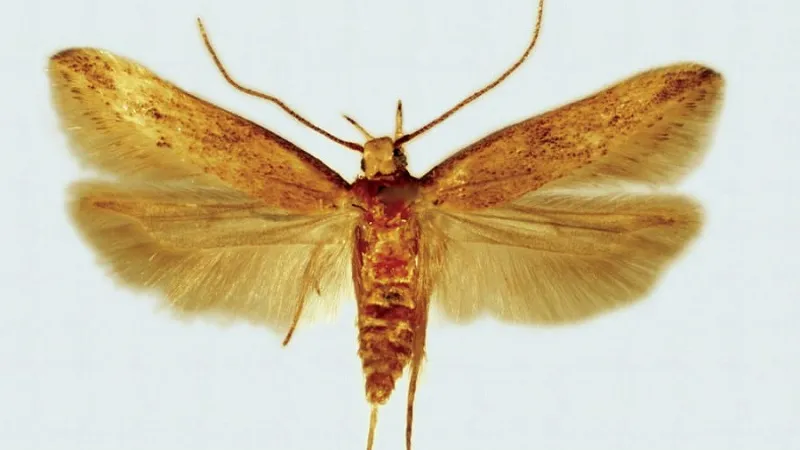
Fusarium and Alternaria
Sorghum is susceptible to fungal diseases, including stem and root rots, Fusarium, Alternaria, and smut.
Soilborne pathogens infect seeds under high humidity or if seed coats are damaged, reducing germination and killing seedlings.
Control: Treat seeds before planting.
Root and Stem Rot
Soil bacteria cause these diseases. Root rot damages roots, leading to leaf curling and withering.
Stem rot causes upper leaves to redden and dry. Infected plants are stunted and fail to produce panicles, reducing yields by 30–35%.
Prevention: Plant resistant varieties, treat seeds, and manage pests.
Covered Smut
Affects reproductive organs, replacing kernels with smut galls. Infection spreads during threshing.
Control: Treat seeds with "Vitaflo" (3-4 kg/ton).

Loose Smut
Smut spores persist in soil and seeds. Infection occurs at germination, manifesting as dusty panicles at flowering.
Control: Practice deep plowing, crop rotation, residue removal, and seed treatment.
Harvest and Storage
To maximize productivity, mow the grass about two months after planting. This encourages rooting and faster regrowth. Multiple cuts per season are possible, depending on climate.
Harvest for hay, silage, or green fodder begins just before panicle emergence. Delaying harvest toughens stems, reducing feed quality.
Optimal feed units and digestible protein are achieved when cutting 7–10 days before panicle emergence: ~49.7 feed units and 7.2 digestible protein per hectare. Earlier cutting yields 47.9 and 5.6, respectively; at full panicle emergence, 47.9 and 4.7.
Note. Digestible protein refers to nitrogenous feed components absorbed into an animal's bloodstream.
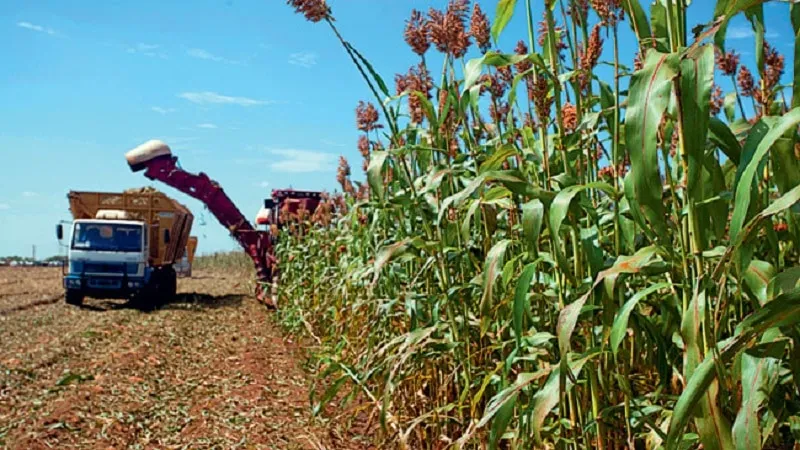
Propagation
Sorghum Sudanense is propagated by seed. Wide-row sowing (60–70 cm between rows) at 12–15 kg/ha is typical.
The crop has a long growing season. Early planting ensures higher yields of mature, less moist seeds. Delayed sowing risks incomplete seed maturation.
Seed crops are harvested when main stem panicles mature, even if foliage is still green. Plants are cut with swathers and threshed after 3-4 days.
Key Agronomic Tips
Follow these recommendations to improve yield and quality:
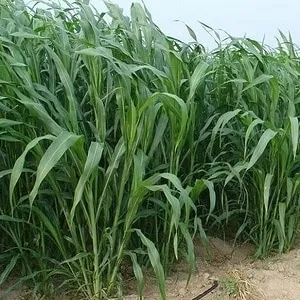 Sow seeds at soil temperatures of +10…+12°C. Early sowing delays germination, allowing weeds to dominate.
Sow seeds at soil temperatures of +10…+12°C. Early sowing delays germination, allowing weeds to dominate.- Staggered sowing at 3-week intervals extends the green fodder harvest window.
- Post-sowing, roll soil with heavy ring rollers to retain moisture and improve germination.
- Applying granular superphosphate (50–60 kg/ha) at sowing boosts yield and speeds maturation.
- For green fodder or silage, intercropping with legumes increases protein content.
Conclusion
Sudan grass is a valuable cereal crop yielding high-quality, nutritious livestock feed. Rich in protein, fats, fiber, and sugars, it benefits animal diets. Cultivation is straightforward, and the crop is resilient to pests and diseases.







